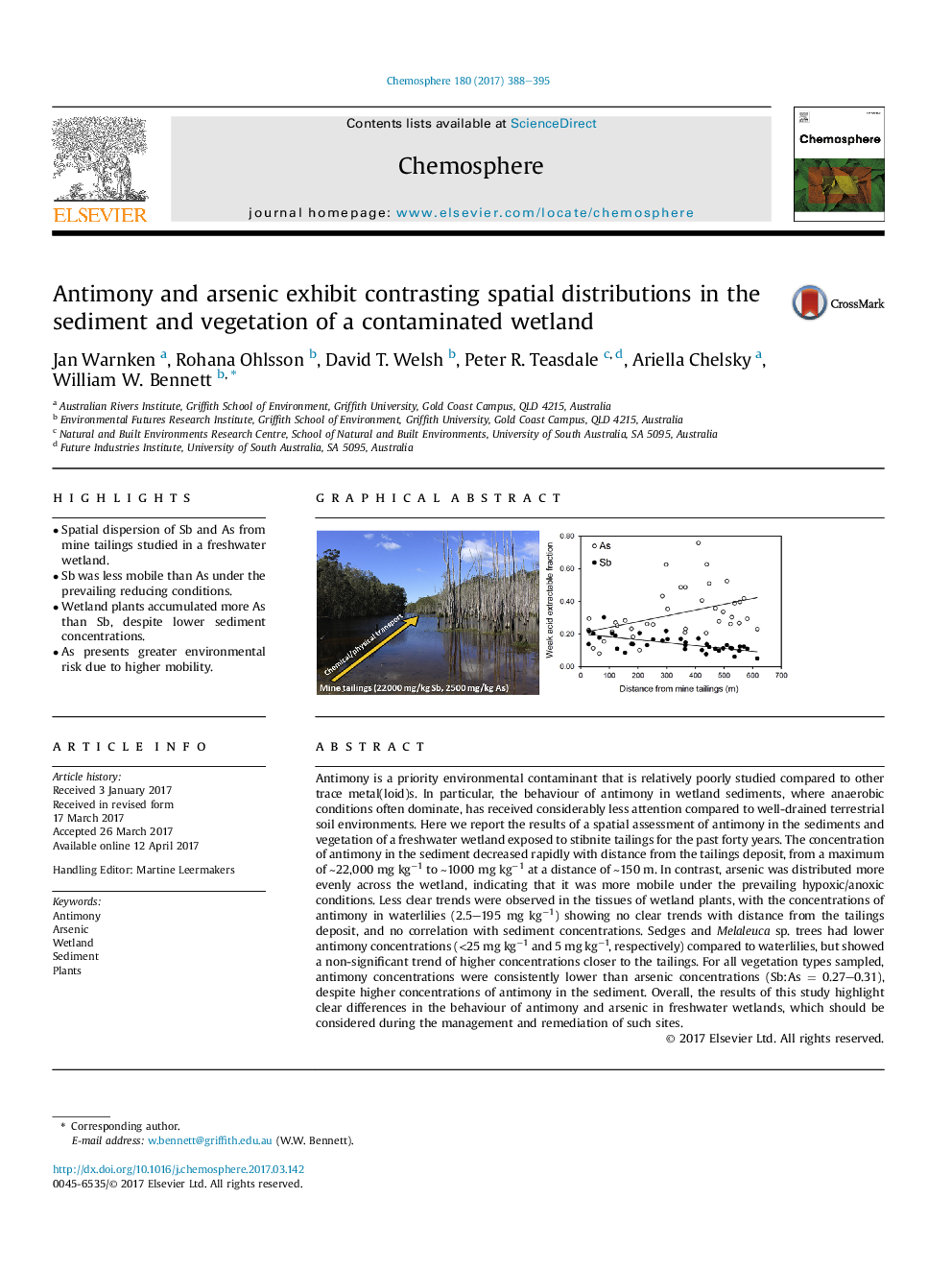| کد مقاله | کد نشریه | سال انتشار | مقاله انگلیسی | نسخه تمام متن |
|---|---|---|---|---|
| 5746122 | 1618791 | 2017 | 8 صفحه PDF | دانلود رایگان |
- Spatial dispersion of Sb and As from mine tailings studied in a freshwater wetland.
- Sb was less mobile than As under the prevailing reducing conditions.
- Wetland plants accumulated more As than Sb, despite lower sediment concentrations.
- As presents greater environmental risk due to higher mobility.
Antimony is a priority environmental contaminant that is relatively poorly studied compared to other trace metal(loid)s. In particular, the behaviour of antimony in wetland sediments, where anaerobic conditions often dominate, has received considerably less attention compared to well-drained terrestrial soil environments. Here we report the results of a spatial assessment of antimony in the sediments and vegetation of a freshwater wetland exposed to stibnite tailings for the past forty years. The concentration of antimony in the sediment decreased rapidly with distance from the tailings deposit, from a maximum of â¼22,000 mg kgâ1 to â¼1000 mg kgâ1 at a distance of â¼150 m. In contrast, arsenic was distributed more evenly across the wetland, indicating that it was more mobile under the prevailing hypoxic/anoxic conditions. Less clear trends were observed in the tissues of wetland plants, with the concentrations of antimony in waterlilies (2.5-195 mg kgâ1) showing no clear trends with distance from the tailings deposit, and no correlation with sediment concentrations. Sedges and Melaleuca sp. trees had lower antimony concentrations (<25 mg kgâ1 and 5 mg kgâ1, respectively) compared to waterlilies, but showed a non-significant trend of higher concentrations closer to the tailings. For all vegetation types sampled, antimony concentrations were consistently lower than arsenic concentrations (Sb:As = 0.27-0.31), despite higher concentrations of antimony in the sediment. Overall, the results of this study highlight clear differences in the behaviour of antimony and arsenic in freshwater wetlands, which should be considered during the management and remediation of such sites.
340
Journal: Chemosphere - Volume 180, August 2017, Pages 388-395
